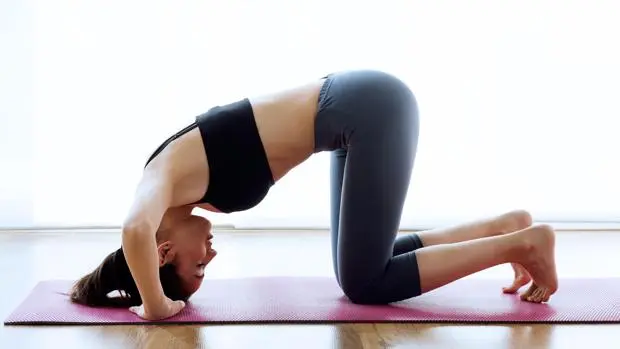Contents
Easy and effective hypopressive exercises for a flat stomach
Fitness
These exercises improve our posture, breathing capacity and the health of our pelvic floor.

If many times we begin to exercise to look better – lose weight, tone up, or gain muscle -; other times the motivation is born from the search for health care. Improving mobility, stomach problems or back pain can have a solution in sport.
One of the types of exercises that have the most benefits for our body are hypopressives. These, focused on the abdomen area, are postural and breathing exercises that aim to train our body without increasing intra-abdominal pressure. Miriam López, personal trainer and TRIB3 trainer, explains that these exercises help us to reprogram our abdominal girdlel, as well as to regain muscle tone and function. Likewise, this training helps to improve pathologies such as abdominal diastasis or urinary incontinence, since they strengthen the pelvic floor. “Also, hypopressives make us appreciate an improvement in our appearance, in postural correction and even increase self-esteem,” says the coach.
Marc Bonamusa explains in his book «Objective: flat stomach» (Amat Editorial), that these exercises are also ideal «for reduce waist circumference, reduce back pain, increase respiratory capacity, improve blood circulation and prevent injuries derived from poor pressure management ”.
The key: breathing
These exercises are recommended for everyone, regardless of age or gender. Miriam López explains that, in some of them, we can consult with our doctor before performing them, since “there are patients with various pathologies incompatible with them, such as heart problems, severe abdominal inflammatory processes or high blood pressure, as well as if she is pregnant. «It is important to remember that we should not exercise after eating food, and that we must maintain adequate hydration “, warns the personal trainer.
Hypopressive exercises are more than just abdominal exercises. Marc Bonamusa comments in the book that these affect “anatomical structures that we cannot voluntarily control, such as the diaphragm, the abdominal girdle and the pelvic floor.” “These exercises modify the way your brain manages posture, reorganizing your body scheme so that it is more effective and functional,” explains the author.
Two exercises to start
Miriam López leaves instructions to carry out the most basic hypopressive exercise, perfect to introduce us to the technique. Before, the trainer reminds of the importance of taking care of the position of our body (inclination, cervical elongation …) and the control of breathing to perform them.
To perform this exercise, we must first stand upright, with our legs separated at the hips. We must maintain the knees slightly bent, to avoid hyperextension of these. Our shoulders should be relaxed and we should keep our eyes straight ahead.
Once in position, we must pretend we are trying to touch something with our head up, stretching ourselves. Afterwards, we must slightly raise the chin and bend the elbows 90 degrees outwards and place the wrists in flexion with the palms of the hands pointing towards the floor in front of the hips. This is the position known as “Vase handles”.
Then, we must generate the sensation of exerting force outwards with the elbows and towards the ground with the palms of the hands, but we must not move, controlling breathing. Once in position, we must cycle breathing.
Another exercise that we can carry out, a continuation of this one, is the one explained by Marc Bonamusa in his book. For this, keeping the position of the last exercise, we must bend the trunk forward, as if it were a board, and rest the hands on the thighs, in the mid-upper area, above the knees. It is important to keep your elbows open and your hands flexed with your fingers straight.
Destabilize ourselves to strengthen
Once in position, the author advises that it is important to keep the back well aligned, and to stretch it “as if we wanted to grow.” In position, we must look askance at our knees, and start the breathing cycle.
Marc Bonamusa leaves three key tips in the publication: as Miriam López warned, we should not do the exercises as soon as we eat, it is better to go to the bathroom before doing them and, the best time to do them is in the morning. Finally, the trainer explains with what other exercises we can combine hypopressives: «They can be done together with exercises that work the core: I recommend exercises that destabilize us, such as with bosu or rubber bands, to try to make our abdominal girdle contract involuntarily. This will make us double better.









